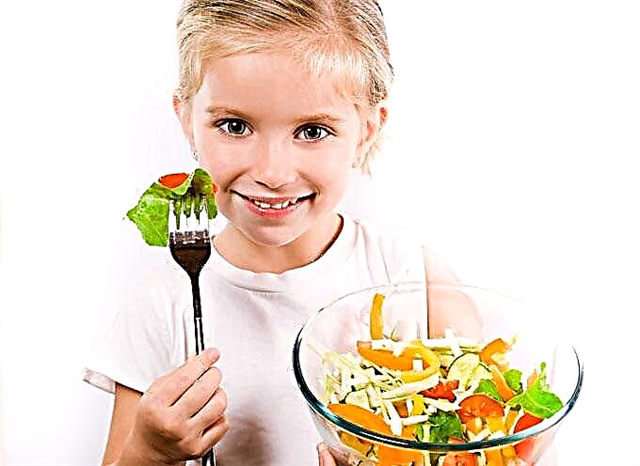When the color of feces changes at any age, attention is paid to the condition of the baby, the consistency of feces, the weight of the child. If the color of the stool has changed once, and the baby is feeling great, most likely the reason is food. If light stool is accompanied by fever, vomiting, sleep disturbance, there is probably a pathology that needs to be treated.

By the color of the stool, you can determine the health and development of the child without pathologies
What does normal baby's stool look like?
It is difficult to give a clear description of a normal baby's stool (up to a year). Rates fluctuate in different ranges, depending on nutrition and life circumstances.
When conducting a general analysis of the child's feces, several signs are distinguished:
- Colour;
- smell;
- consistency;
- frequency of bowel movements.
There are a number of reasons for stool discoloration. They are not always signs of a serious illness. The type of feeding, as well as the time it takes for the ventricle to adapt to the new diet and conditions, can cause an unnatural appearance of feces.
On a note. Not the change in stool itself should become an alarming signal, but the child's well-being. If the baby has become capricious, restless, then you should consult a doctor.
Color variations of the norm
The first months of life, yellow feces in a newborn on mother's milk are the norm. Feces acquire a brown tint after the introduction of complementary foods. The color of the feces can change from the foods that the nursing mother eats. When artificially fed, the poop is thicker and darker. Their color can be brown or light yellow. The composition of the mixture has an effect.
Normal baby feces can be light yellow to dark brown, sometimes black in color. Discoloration does not always cause disease or disorders:
- The greenish-yellow tinge of poop in babies prevails when breastfeeding.
- The introduction of complementary foods changes color, for example, to orange or green.
- When taking certain medications (antibiotics, activated charcoal, iron-based preparations), the stool becomes almost black or dark brown in color.
- If formula or breast milk is poorly absorbed, feces will turn greenish or orange.
Normal feces should be brown in different shades, from light to dark, depending on the nutrition and age of the baby.

A calm child without tears and whims speaks of normal development
Consistency, smell
The first months, in consistency, baby feces resemble a liquid gruel, they may not be much thicker than water. By the third month, the stool becomes thicker, but still looks like gruel.
With the introduction of complementary foods, not only the color of feces changes, but also the smell. It will become sharper and more unpleasant. Density depends on nutrition, or rather complementary foods. Bread and other flour products will fix the baby, then hard feces, similar to peas or balls, may appear. Fruit purees will make your stools runny.
Infants who are fed formula experience faster changes. By 1.5 months, the consistency of feces resembles a thick gruel. The smell is more pungent.
Bowel frequency
At an early age, the digestive system has not yet fully strengthened, so bowel movements may be frequent or rare. It is normal for breastfeeding to have a bowel movement after every meal. If the baby is not capricious and behaves calmly, then there is no reason for panic.
In breastfed babies, the first month, stool can be up to 8 times, by the second - the frequency will become less. By six months, the stool is normal, but usually occurs after feeding.
On a note. Don't panic if your baby doesn't have bowel movements every day. In breast milk, almost all components are absorbed by the body, so sometimes there is nothing to remove from the ventricle.
What affects the color of feces
Stool discoloration does not just happen, there is always a reason. Sterkobelin (a special enzyme of the gallbladder) is responsible for the color of the stool. If it is not there, then the child's feces begin to lighten.

The color of the baby's feces is influenced by his nutrition, more precisely, by complementary foods
On a note. Yellow stools in a newborn or almost white may indicate malfunctioning of the gallbladder.
There are several factors that affect stool discoloration:
- taking medicines;
- eating certain foods;
- disruption of the normal functioning of the microflora of the stomach;
- diseases of the digestive system;
- viruses and bacteria.
The most harmless reason for color change is a change in diet. You need to analyze the foods that the baby ate. If there were no new introductions of complementary foods, they look for the reason in another. If the color of the feces was not affected by nutrition, then you should seek help from a doctor who can more professionally establish the cause of the changes.
Council. After walking with the baby on the street, it is important to ensure that the child does not stick his hands in his mouth after interacting with a kitten or puppy on the playground. When they come home, they wash their hands with soap and water, since most of the bacteria enter the ventricle through them. Children under one year old have a peculiarity: they tend to put everything in their mouths. So bacteria will quickly disrupt the functioning of the fragile ventricle.
Reasons for being bright yellow or light yellow
In children under 1 year old, light, white or sandy feces are rare. Sometimes, with the introduction of a new complementary food product, a change in the color of the feces may occur. If the poop becomes sandy or light yellow, then they recall what the baby ate the day before. Everything should be restored in a few days.
On a note. Often, white or sandy feces are observed during the period of tooth growth. No treatment is required, everything will recover on its own.
The reason for the change in the color of feces can be dysbiosis. The disease is often seen in newborns. The stool becomes liquid, foaming, mucus and undigested food debris, inclusions may appear in it. Additional signs of the disease are:
- restless child behavior;
- weight reduction;
- poor sleep;
- decreased appetite.
The reasons for the change in feces in a child from a normal color to a bright yellow or light yellow color can be:
- Taking antipyretic, antibacterial and anti-inflammatory drugs and calcium-based drugs.
- Adenovirus infections and influenza. These are the most common reasons for feces clarification. There is a change in its color for a couple of days after the first signs of disease appear.
- Food. Fatty and sweet foods, which contain a lot of calcium, will provoke a discoloration of the stool (this is sour cream, homemade cakes, cottage cheese, milk).
- Stagnation of bile. A special enzyme with bile is excreted from the body with feces, it is he who stains the feces in a characteristic brown color. If bile doesn't come out, the enzyme stays with it in the bladder. Obstruction of the biliary tract can provoke such a pathology.
- Hepatitis. White or sandy stools with the development of this disease are accompanied by darkening of the urine. In addition, the development of hepatitis will be signaled by the appearance of pain in the abdomen on the right, as well as nausea, vomiting and worsening of the condition.
- Pancreatitis (inflammation of the pancreas). A very rare disease in babies. The appearance of yellow stool in a newborn is accompanied by nausea and pain in the upper abdomen, which can radiate to the lower back and back.
- Whipple's disease. A rare pathology, the first sign of which is a light, almost white, liquid stool. The patient has a stool about 10 times. The feces are foamy, pasty with a pungent unpleasant odor.
On a note. In the first months of life, yellow feces in breastfed babies is the norm. In infants on formula or mixed food, at this time, feces acquire shades of brown.
Bright yellow poop in a newborn after the introduction of complementary foods may indicate a large consumption of orange vegetables (pumpkin, carrots).
If the baby's stool has become bright yellow or orange, you must definitely consult a doctor, since such a color may indicate the development of pathologies of the kidneys, liver and gallbladder. In the first days, bilirubin is excreted through the child's feces, so the shade can be bright yellow. Against the background of a large amount of this substance, children develop jaundice in children. With timely treatment, it will not harm the child.
Where to go
If you notice the first signs of problems, such as discoloration of stool, you should seek the advice of your pediatrician.

The restless behavior of the baby, crying and whims will tell you that you need to see a doctor
The doctor will interview the parents, examine the baby, and palpate the tummy. To draw up a complete picture, you will need to collect data on the behavior and nutrition of the baby, and undergo examinations. In addition to a general blood test, you will need to donate a lump of feces for a detailed study in the laboratory.
X-ray and ultrasound will be assigned, which will begin to collect a complete picture of the state of the baby's internal organs. If the examinations carried out do not give an answer, then manometry, endoscopy and electroenterogastrography, coprology can be prescribed.
Symptoms of pathological processes
If the child has a sandy or light-colored feces, then the nutrition and behavior of the toddler should be revised, to understand why this happened. Parents need to carefully monitor the condition of the stool, restore proper nutrition. If the color is gradually restored, then its changes are associated with food intake.
If other alarming symptoms additionally appear, then you should definitely consult a doctor:
- the baby has become lethargic, looks tired;
- the child refuses to eat, does not want to play;
- nausea and vomiting appear;
- body temperature rises;
- the baby's tummy hurts, hums, gases do not escape;
- the smell of feces takes on a fetid aroma;
- the mucous membrane of the mouth, skin, sclera of the eyes acquire a yellowish tint, jaundice for babies is not uncommon;
- changes not only in feces, but also in urine (brown or white, opacities appeared).
At least one of the listed symptoms should make parents alarmed. Their appearance is a clear signal of the need to make a call to the pediatrician or go to him for an urgent consultation.

Stool color also changes as the child grows.
The state of human health can always be judged by the appearance, consistency and smell of feces. For a child, this moment is most relevant, since a baby under one year old is not able to talk about his pains and concerns. Attentive parents by the color of the stool will be able to quickly identify the appearance of pathological processes and give a head start to the development of the disease.



